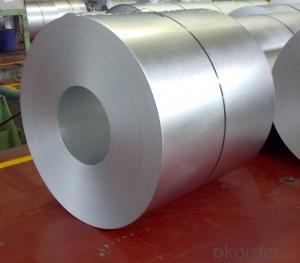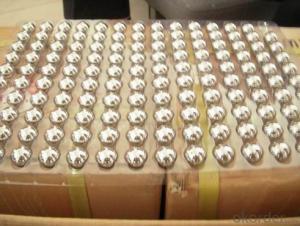Best Stainless Steel
Best Stainless Steel Related Searches
Best Paint For Stainless Steel Best Inverter For Solar System Solar Panel Inverter For Home Best Inverter For Solar Panels Best Solar Inverter For Rv Bending Machine For Pvc Profiles Micro Inverter For Solar Panel Best Glue For Aluminum Foil Pvc Foil For Mdf Plastic Wall Coverings For BathroomsHot Searches
Type Of Inverter For Solar Price Of Shipping Containers For Sale Types Of Inverter For Solar Used Sandwich Panel For Sale Bags Of Cement For Sale Pvc Chairs For Sale Tilt Panel Props For Sale Types Of Temporary Side Panels For Cement Deck Cost Of Awnings For Decks Type Of Scaffolding With Pdf Price Of Scrap Stainless Steel Price Of Stainless Steel Scrap Price Of Stainless Steel Type Of Stainless Steel Best Solar Inverter In China Types Of Stainless Steel Grades Types Of Stainless Steel China Aluminum Coil Factory pvc pipe manufacturers in usa Sandwich Panel Price In IndiaBest Stainless Steel Supplier & Manufacturer from China
Okorder.com is a professional Best Stainless Steel supplier & manufacturer, offers integrated one-stop services including real-time quoting and online cargo tracking. We are funded by CNBM Group, a Fortune 500 enterprise and the largest Best Stainless Steel firm in China.Hot Products
FAQ
- Stainless steel sheets are indeed a suitable option for heat transfer equipment. The reason lies in the remarkable thermal conductivity properties of stainless steel, enabling it to effectively transfer heat between different mediums. Its ability to endure high temperatures without warping or deforming makes it particularly well-suited for heat transfer applications. Moreover, stainless steel's resistance to corrosion guarantees the equipment's durability and longevity. Additionally, its hygienic qualities make it a fitting choice for industries such as food and pharmaceuticals, where cleanliness is of utmost importance. In conclusion, stainless steel sheets are a dependable and efficient selection for heat transfer equipment.
- Is there a big price difference between the SUS304 stainless steel plate and the drawing plate?
- After drawing the stainless steel plate, because the surface has a thread, so relatively easy to rust, 201 of the stainless steel material is the worst material, rust resistance naturally worse.
- Yes, stainless steel sheets are suitable for medical equipment or devices. They possess excellent corrosion resistance, durability, and high strength, making them ideal for use in medical settings. Stainless steel is also easy to clean and maintain, which is crucial for maintaining a sterile environment.
- Stainless steel sheet patterns come in a variety of options. Some of the most commonly used patterns are as follows: 1. The plain or smooth pattern: This pattern is the simplest and most basic, offering a smooth and flat surface. 2. The diamond pattern, also known as tread plate or checker plate: This pattern has raised diamond-shaped ridges, providing excellent slip resistance. 3. The tear drop pattern: Similar to the diamond pattern, this one has raised teardrop-shaped ridges, offering enhanced slip resistance. 4. The linen pattern: This pattern resembles the texture of linen fabric, with a series of parallel lines intersected by a crisscross pattern. 5. The quilted pattern: Resembling a quilted fabric, this pattern has a diamond-shaped or square-shaped design. 6. The hammered pattern: With a textured surface resembling the marks left by a hammer, this pattern adds visual interest and dimension. 7. The perforated pattern: Featuring small holes or perforations in the sheet, this pattern allows for improved ventilation and drainage in certain applications. These examples represent just a fraction of the stainless steel sheet patterns available. Each pattern offers unique aesthetic and functional advantages, providing greater versatility in design and application.
- Yes, stainless steel sheets can be used in the automotive industry. Stainless steel is often used due to its high strength, corrosion resistance, and durability. It is used for various components such as exhaust systems, body panels, frames, and interior trim.
- Yes, stainless steel sheets are suitable for outdoor staircases. Stainless steel is a durable material that is resistant to corrosion and extreme weather conditions, making it an excellent choice for outdoor applications. Additionally, stainless steel sheets can be easily cleaned and maintained, ensuring their longevity and aesthetic appeal.
- Yes, stainless steel sheets are suitable for electrical enclosures. Stainless steel is known for its excellent strength, corrosion resistance, and durability, making it an ideal material for protecting electrical components. It provides a high level of protection against environmental factors such as moisture, dust, and extreme temperatures. Additionally, stainless steel has good electrical conductivity, which is crucial for proper grounding and shielding. It also offers good electromagnetic compatibility (EMC), reducing the risk of electromagnetic interference (EMI) in sensitive electrical equipment. Moreover, stainless steel is easy to clean and maintain, ensuring a long-lasting and reliable enclosure for electrical applications.
- Stainless steel sheets and plates, widely utilized across various industries and applications, possess distinct dissimilarities. Firstly, concerning thickness, sheets are generally thinner compared to plates. Sheets typically range from 0.4mm to 4mm, whereas plates commence at 4mm and extend to several inches. Secondly, their sizes differ. Sheets are commonly available in standard dimensions of 4ft x 8ft or 5ft x 10ft, while plates usually come in larger sizes and can be tailored to specific measurements. Plates are commonly employed in heavy-duty applications, necessitating enhanced strength and durability. Thirdly, weight plays a role in distinguishing the two. Due to the variance in thickness, plates generally possess greater weight than sheets. This characteristic renders plates more suitable for weight-bearing applications, such as construction, shipbuilding, or industrial equipment. Fourthly, the applications of sheets and plates differ. Stainless steel sheets are often employed for decorative purposes, architectural applications, and smaller-scale projects like kitchen backsplashes or countertops. Conversely, plates are favored for structural components, machinery parts, and load-bearing applications, like bridges, tanks, or pressure vessels. Lastly, cost distinguishes sheets from plates. Stainless steel plates are typically more expensive than sheets due to their larger size and increased thickness. Sheets, being thinner and smaller, are usually more cost-effective and readily accessible. In summary, the key distinctions between stainless steel sheets and plates encompass their thickness, size, weight, applications, and cost. It is imperative to consider these factors when selecting the appropriate material for a specific project or application.















































